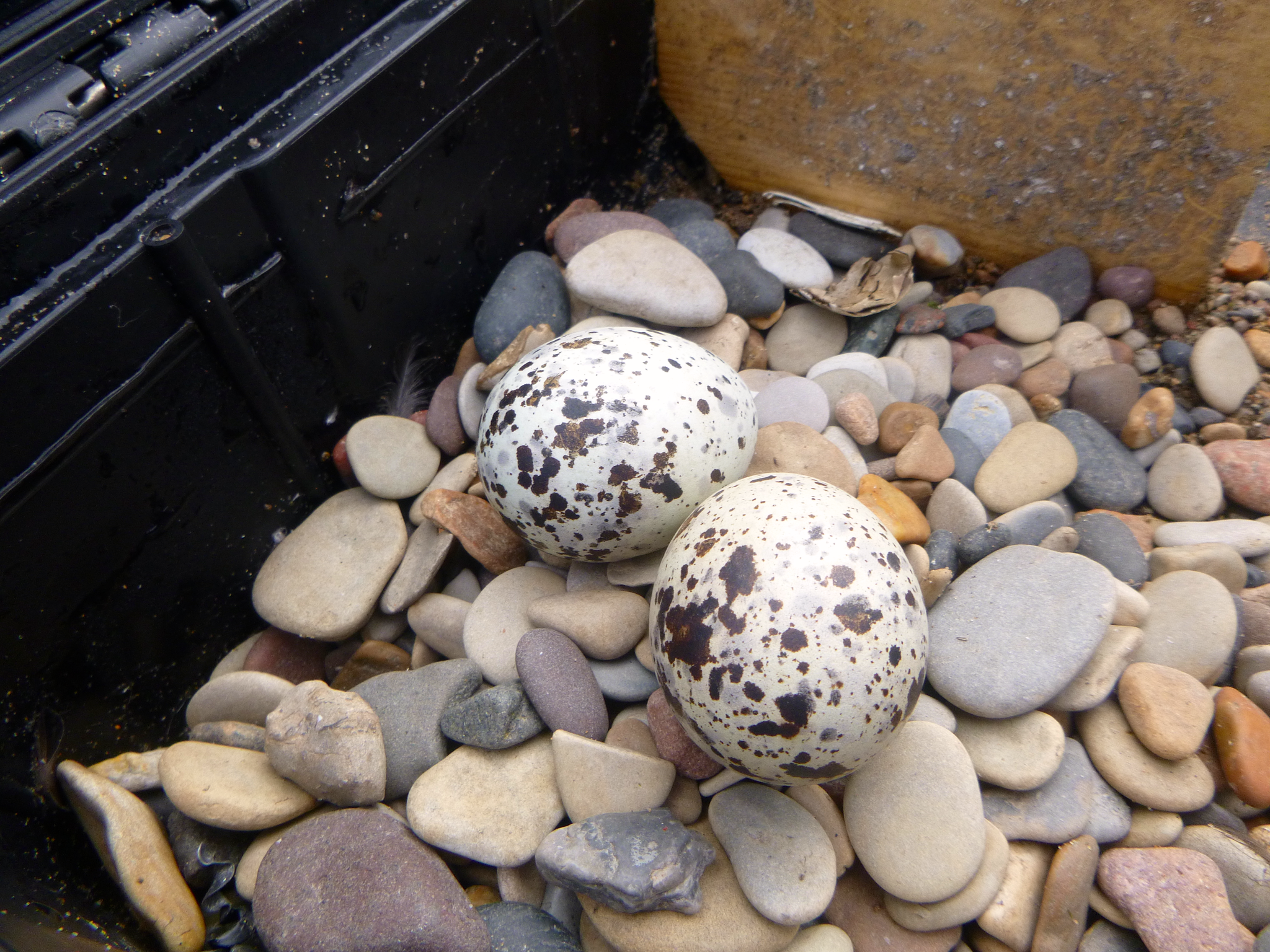Graduate student Drew Sauve recently returned from Cooper Island. He describes his collaboration with George in this guest post. The Black Guillemots on Cooper Island are one of many wild populations that are responding to climate change by changing when they lay their eggs. These Arctic seabirds want to lay their eggs as soon as...
Category: Nesting
Hatched! So far, so good for the 2018 chicks on Cooper Island
August 11, 2018: Field report Hatching is finally over with one very late egg hatching today after having been incubated for 34 days; 28 days is normal. The oldest nestling is 16 days old; the chick is gaining weight and doing well like all of the other 45 nestlings. While the main pack ice is...
First chicks of the 2018 season
August is the rainy month of our field season, and the first day of the month was tough for us. During our morning nest checks, it wasn’t easy to keep our hands warm in a steady soaking rain, coupled with a windchill of 27 degrees Fahrenheit. The fingerless gloves I wear daily in the summer...
The First Egg!
The first egg of the 2018 breeding season was laid on June 24th by White-Black-Gray. She fledged from Cooper Island in 1995 and has lived through a period of major climate change in the Arctic. Hoping she, and the other 150 guillemots in the colony, have a successful breeding season! The somewhat bad news is...
The first field report of the 2018 season
Great to be back on Cooper island after two intense weeks of preparation in Seattle and Utqiaġvik. Arriving on the island begins an even more intense period as I need to turn the 8-by-12 foot cabin from the overwinter storage shed it has been for the past nine months into a place where I can...
Trying to stay optimistic in a seabird colony that is half full – when it is really half empty
The standard and far-too-simplistic “test” of whether someone is an optimist or a pessimist is to ask if they consider half a glass of water to be half full or half empty. The major flaw in the test is that it implies a steady state situation. If the glass is being filled with water, one...
The Earliest Year
During the 1970s, in my first years in Arctic Alaska, people would talk about it being a “late year” or “early year” when discussing the timing of snowmelt, arrival of birds, flowering of plants, or the melting of sea ice. It was generally assumed one would rarely or ever see an “average year” but that over time annual...
Earliest breeding season in 42 years
The record setting snowmelt in Barrow this spring has resulted in the earliest breeding season for the Black Guillemots on Cooper Island in the 42 years the colony has been studied. Median date of egg laying (when 50 percent of the nests have eggs) was June 16th. Three days earlier than the previous record – set in 2015. Early...
Black Guillemot Eggs
Black Guillemots, unlike many seabirds, lay more than one egg. These eggs are from nest J-09.
The chicks have arrived on Cooper Island!
The first Black Guillemot chicks are hatching in the colony this week and they are just as cute as they are fluffy. There are currently 114 nests with parent birds sitting on eggs or brooding chicks which is making this a productive nesting season and gives us a lot to do each day as we...
